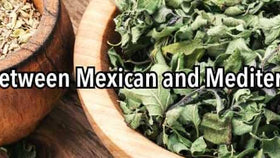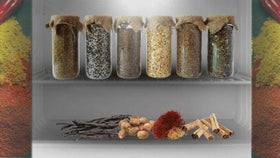Using Vanilla for Baking
When to Use Vanilla Bean Seeds, Powder, or Extract
Vanilla in any form is a wonderful addition to just about any recipe—sweet or savory. But, when it comes to baking, it's essential that you are a bit careful when subbing out seeds, powder, or extract with one another.
Let’s examine each of these products and determine when and how to use them so your culinary creations are the best they can be.
Using Vanilla Seeds
Vanilla seeds are the black flecks scraped from the vanilla pod. To acquire the seeds, you can purchase straight vanilla caviar to take the work out of it or buy whole beans and scrape the pods yourself (but if you choose the latter make sure to save the spent pods for other uses, like one of these homemade vanilla sugar recipes, because every part of the vanilla bean contains loads of flavor).
Whether freshly scraped from the pods or purchased pre-scraped, vanilla seeds not only contribute fantastic aroma and flavor, they enhance the aesthetic appeal of the dish with those black vanilla flecks scattered throughout, presenting as visual proof of the quality of your recipe.
We especially love using vanilla seeds in custards, Panna Cottas, ice cream, and cream sauces.
Using Vanilla Powder
Vanilla powder contains a highly concentrated vanilla flavor so when substituting it in recipes that call for extract or seeds, you will need much less—typically it takes about half the amount powder than it does extract and approximately ½ teaspoon of powder for the seeds from a single, average-sized, grade A vanilla bean.
Be wary of some of the various versions of vanilla powder on the market using maltodextrin, sugar, or other substances. Vanilla powder should be made from 100% vanilla beans that have been dried and finely ground. Unlike the other ways of incorporating that beautiful vanilla flavor into baked recipes, vanilla powder does not contain moisture. As such, all of the flavor will be infused directly into the recipe rather than being lost to evaporation during the baking process. Use vanilla powder in high heat applications! It’s also a great addition to buttercreams and whipped creams because you can get more intense levels of vanillin without jeopardizing the consistency!
Need a great recipe that uses ground vanilla beans? Try this low carb vanilla cake with cream cheese frosting. It is also great for adding to dry mixes, so keep it in mind for DIY gifting projects!
Using Vanilla Extract
When it comes to baked goods, most recipes you come across will call for vanilla extract rather than whole vanilla beans, vanilla seeds, or ground vanilla. This is due to a few factors:
- Vanilla extract is less expensive than the pure vanilla flavoring options.
- Vanilla extract stores well so most people already have it on hand.
- It can be found in just about every grocery store, whereas many other vanilla products need to be purchased at specialty grocers or online.
Vanilla extract, when made from real vanilla beans, is a fantastic product for baking. It does have some drawbacks, though. You see, that vanilla flavor needs to be infused into another ingredient—usually alcohol or glycerin. As such, it is not vanilla in pure form and, while those other ingredients contribute little flavor of their own, they do dilute the vanilla properties and, when used in high-heat applications, will evaporate. With the evaporation, some flavor is also lost. It also takes much more extract to obtain the same vanilla potency equivalent of a single bean. So, to replace the seeds from an average-sized, gourmet vanilla bean in a recipe, you’ll need about 3 teaspoons of vanilla extract.
Regardless of which vanilla option you choose for your next kitchen expedition, just make sure you are choosing a high-quality option because your creation will only be as good as the ingredients you use!
Check out all of our organic vanilla bean products here.







Slofoodgroup
Author